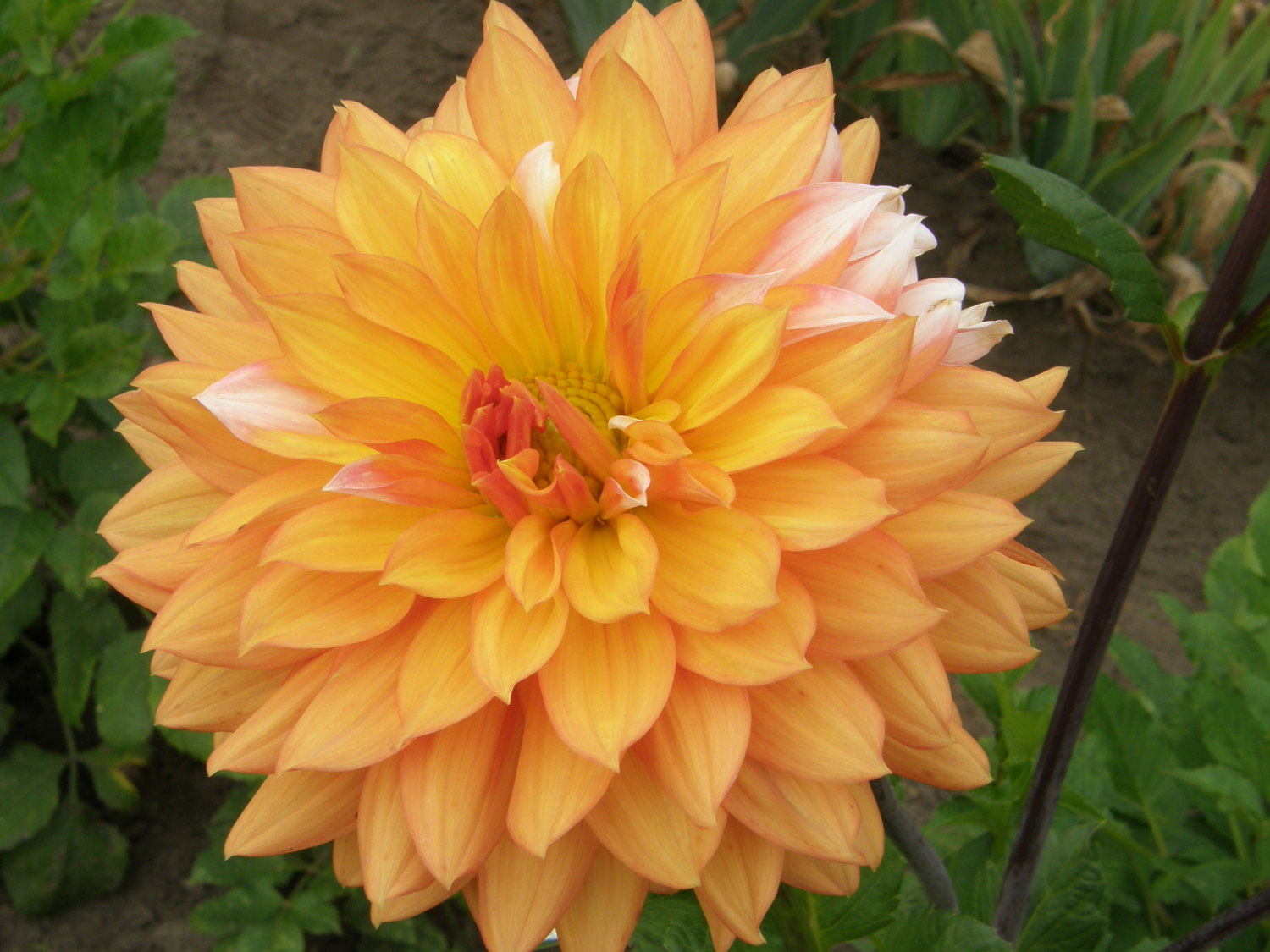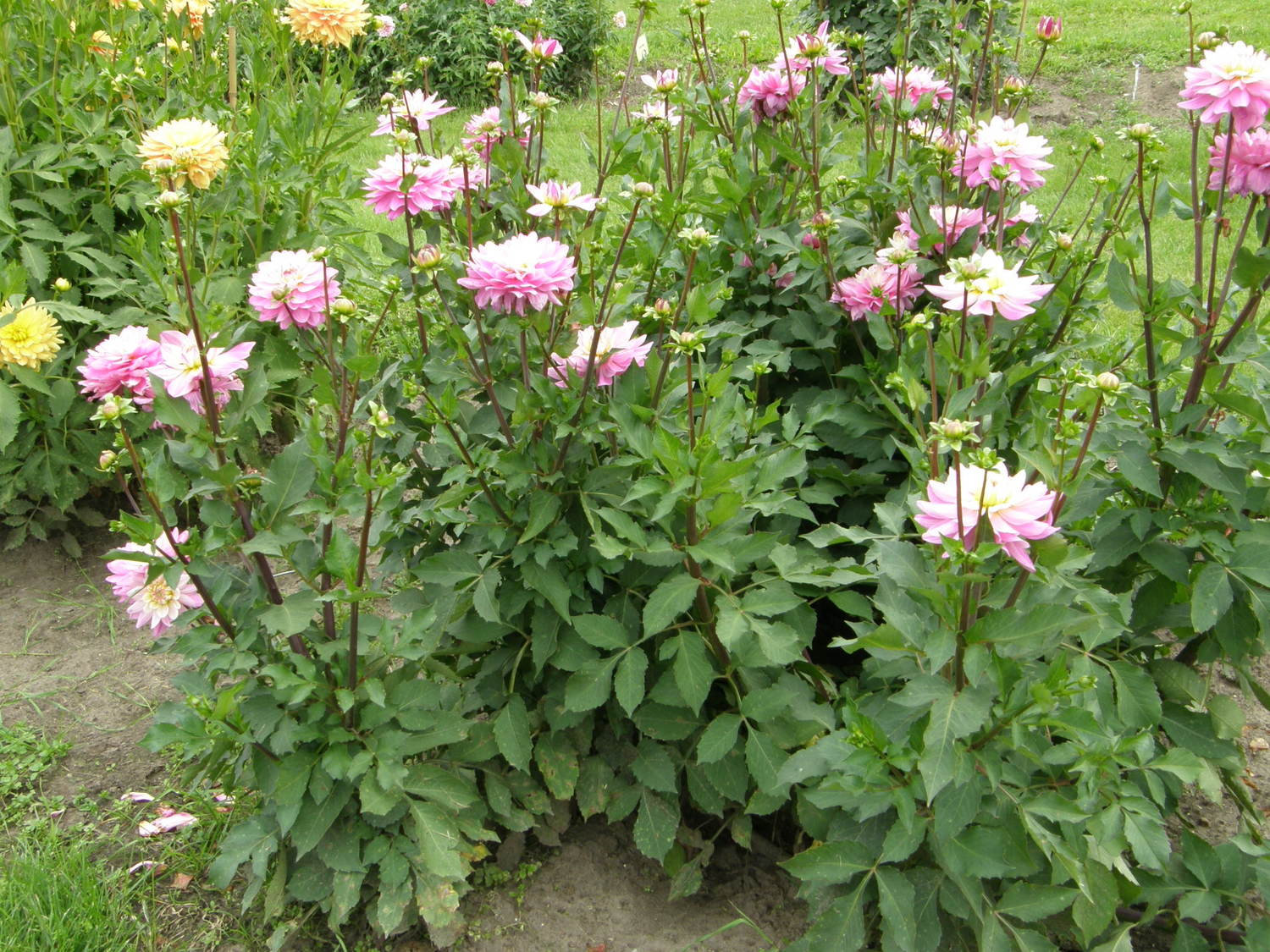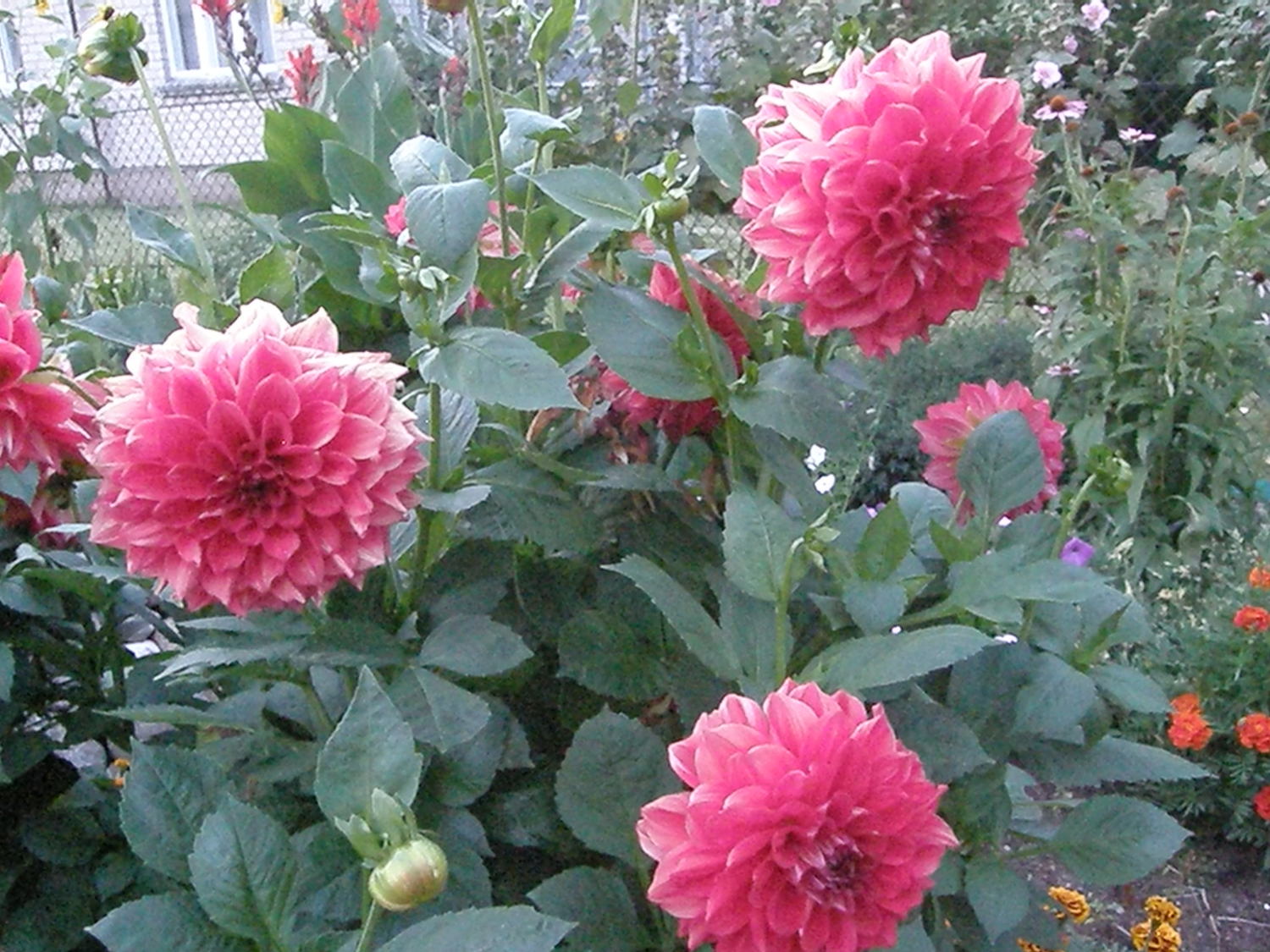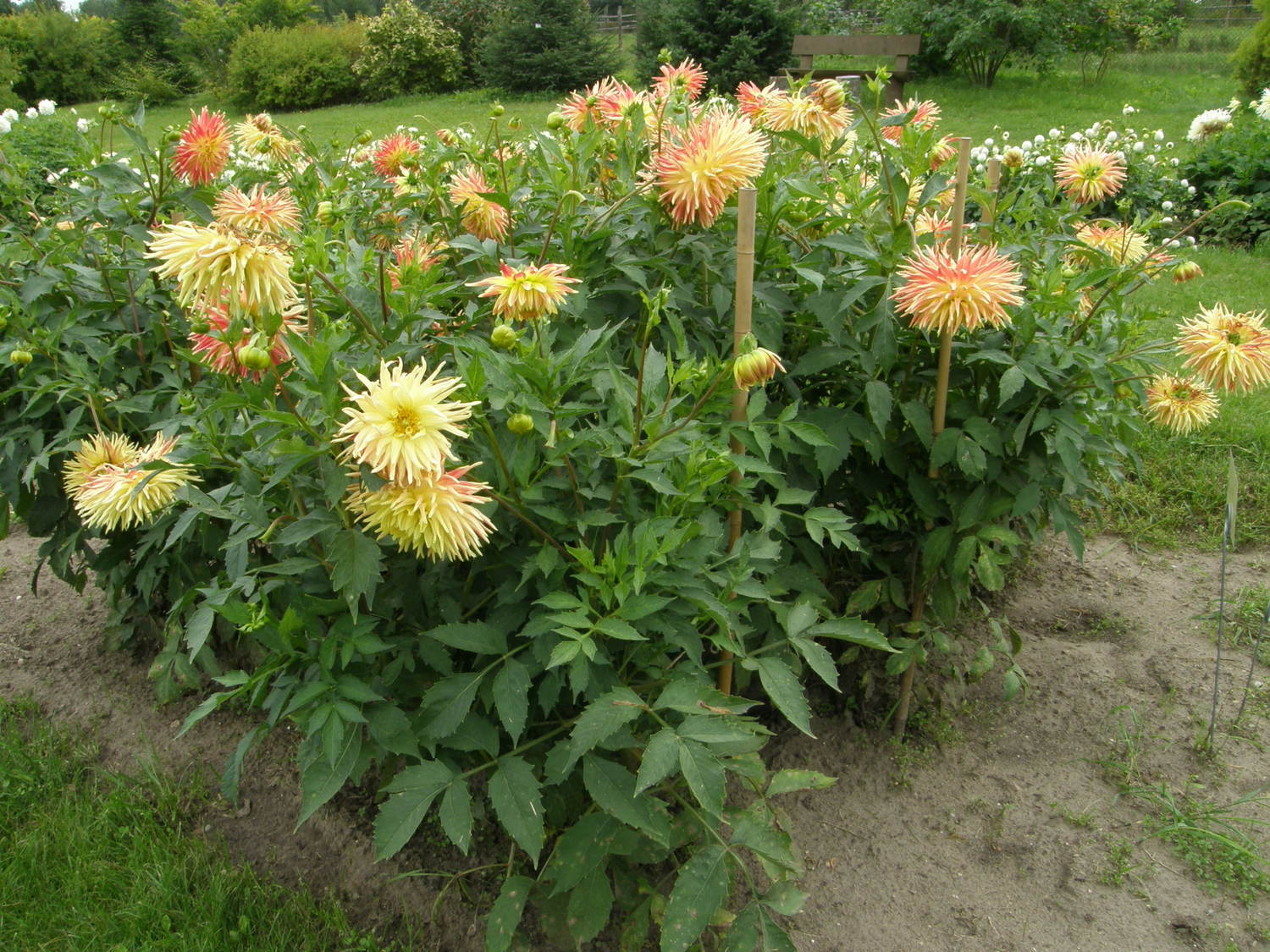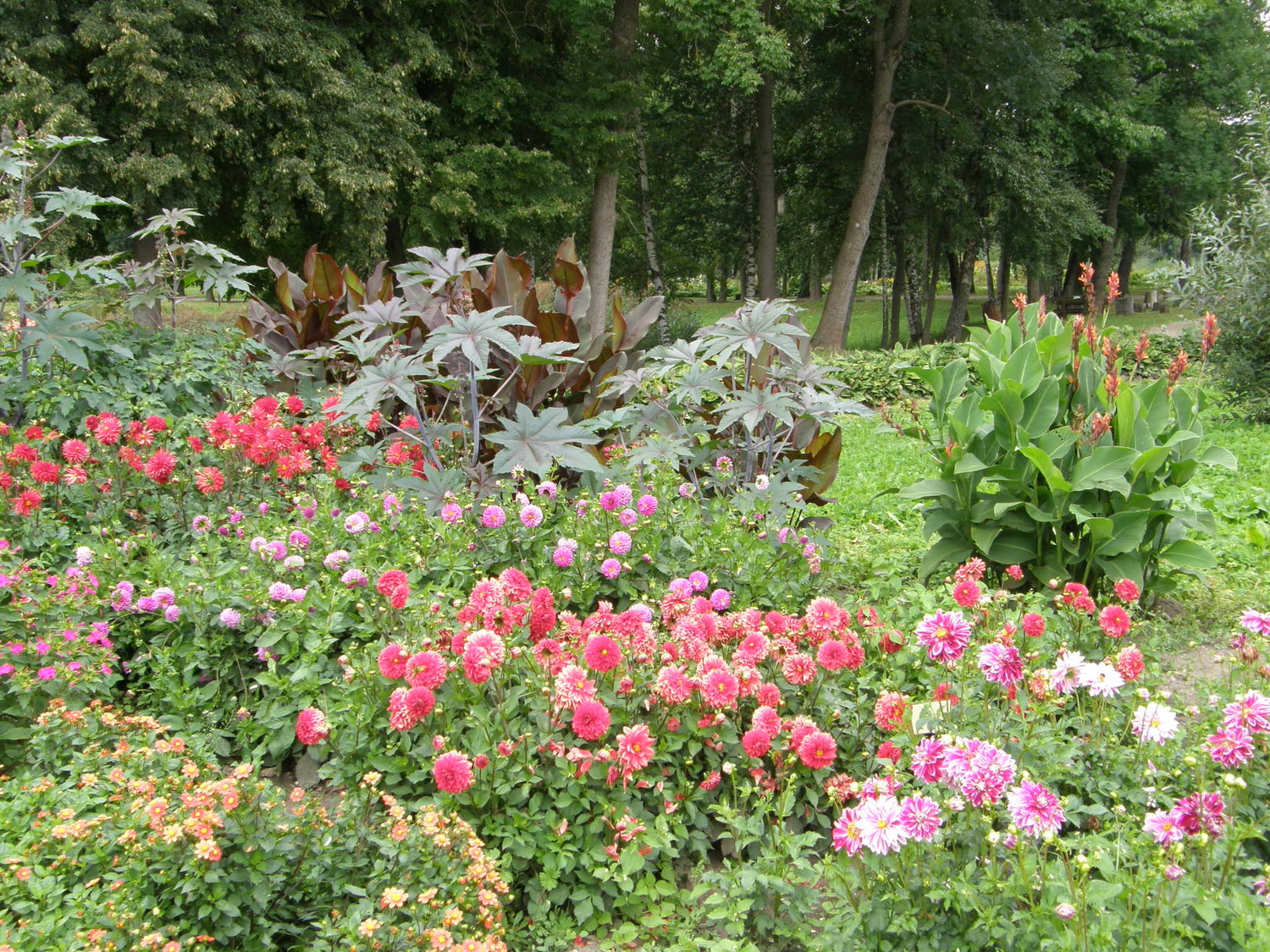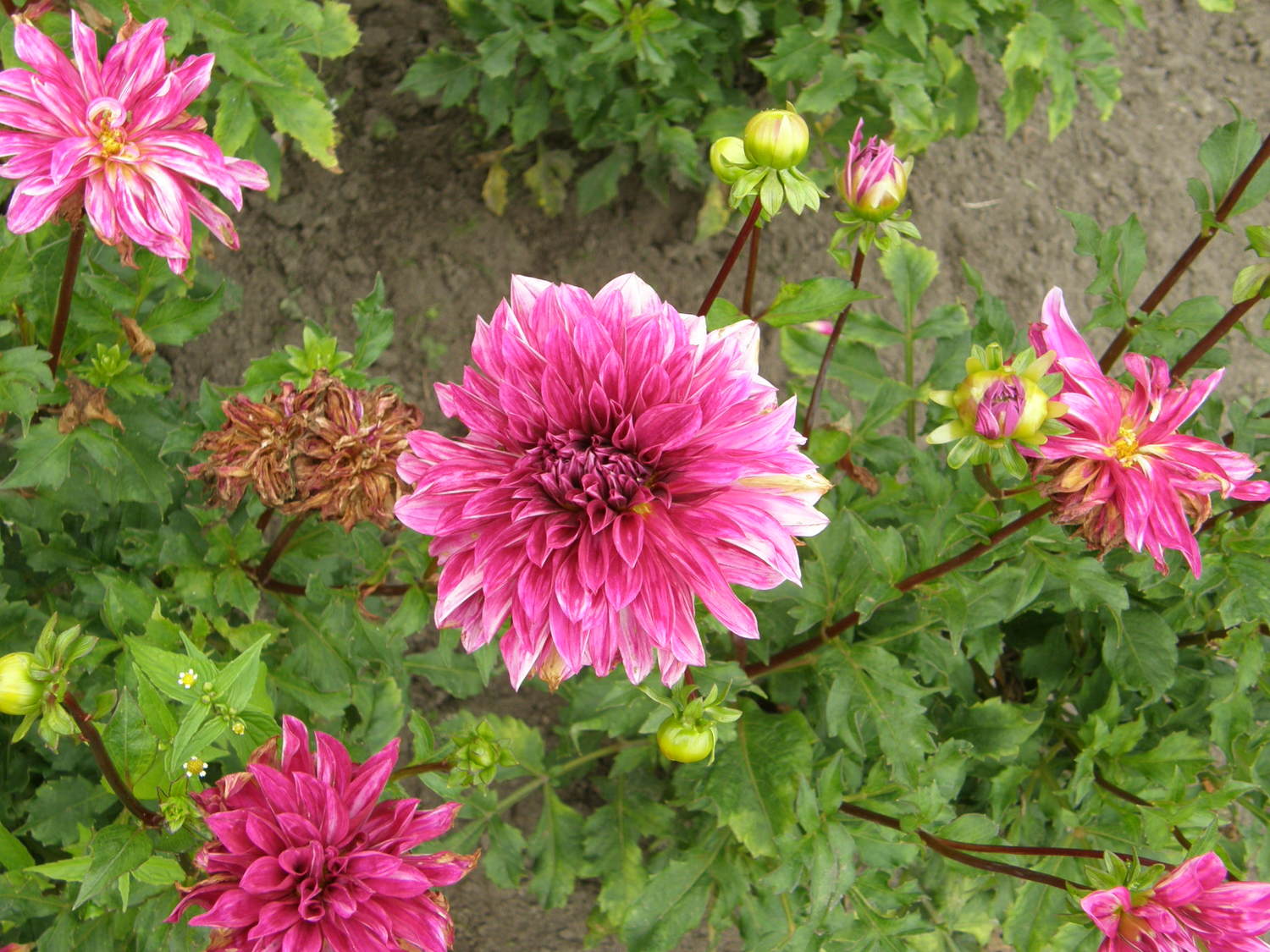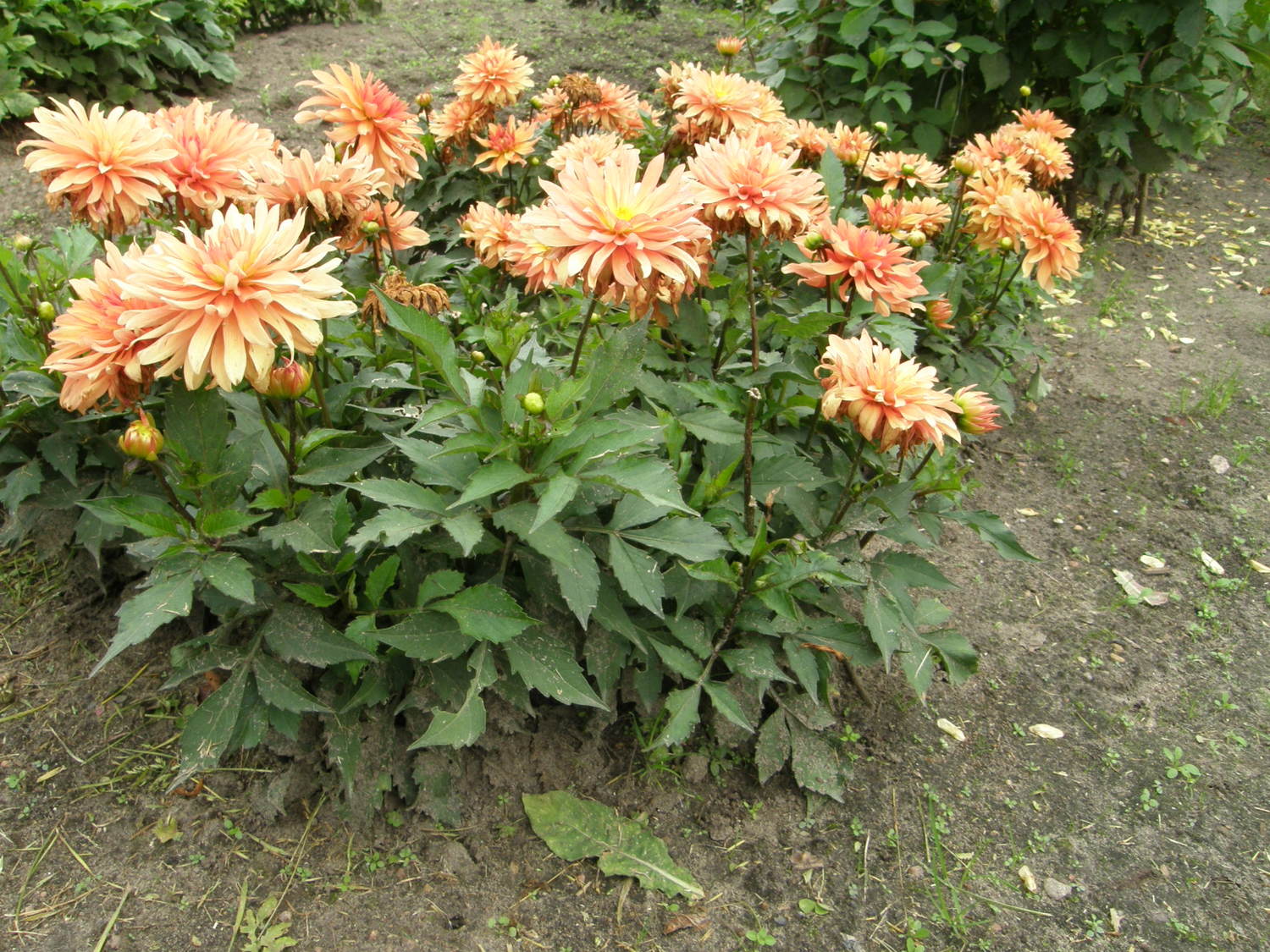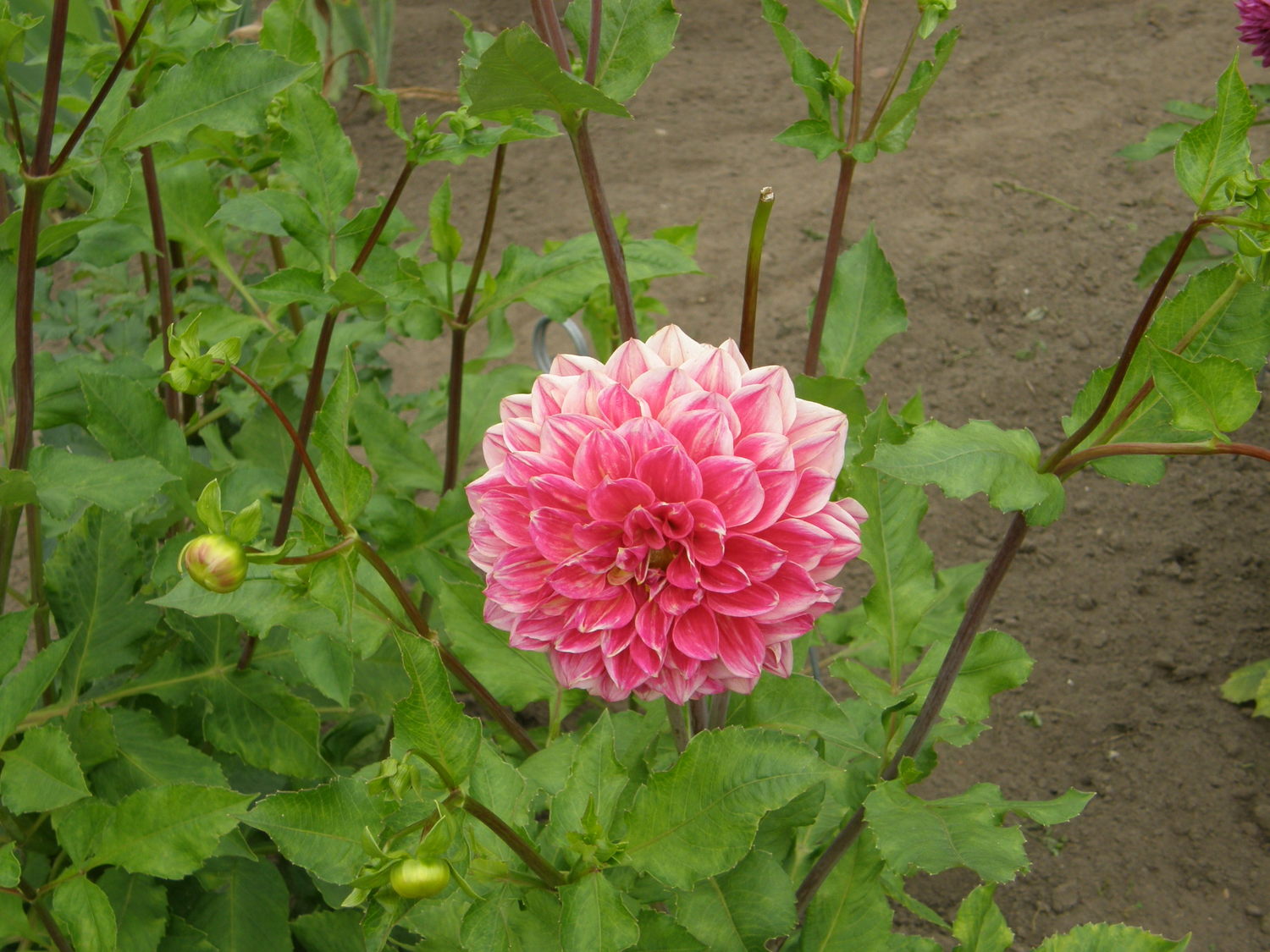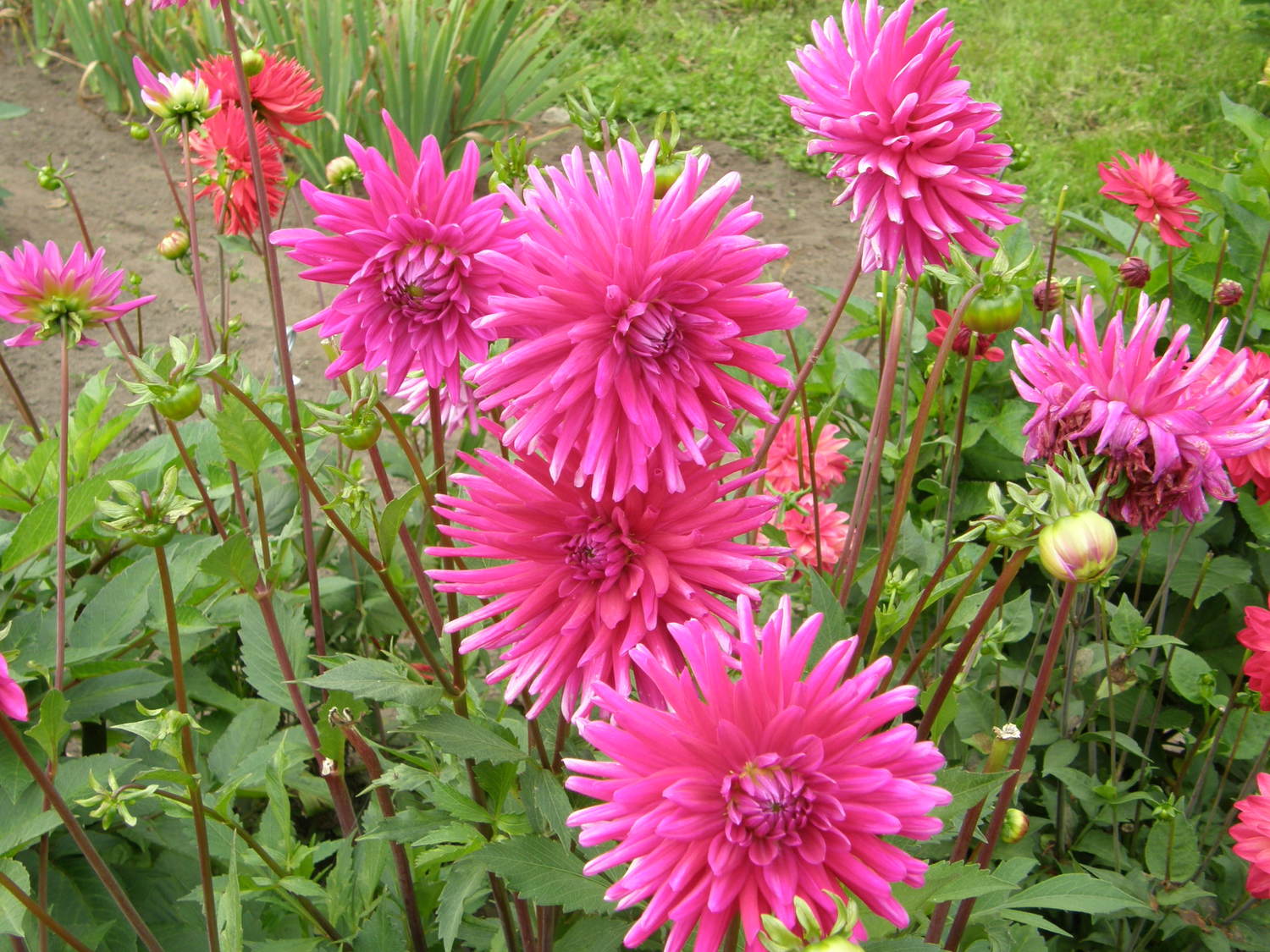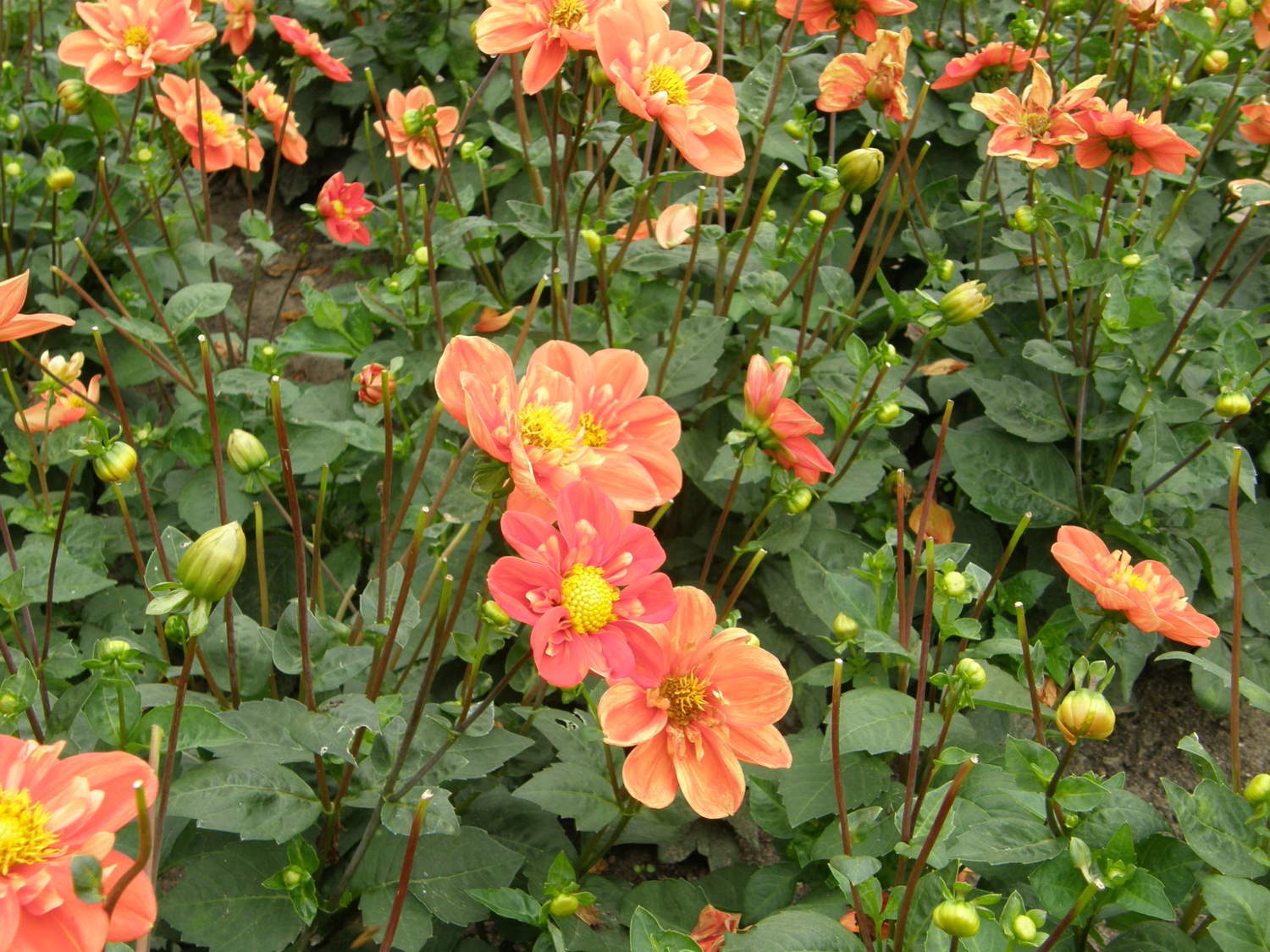Dahlias are among the most stunning garden plants, admired for their wide variety of flower shapes and colours, long blooming period, and ease of care. These flowers are native to Central America, especially Mexico, where dahlias grew in the wild and were valued even during Aztec times. They arrived in Europe in the 17th century when Spanish explorers brought the first specimens from the New World. Initially, the plants were considered botanical curiosities, but soon they began to be selectively bred – this marked the beginning of the era of dahlias' triumph as ornamental plants.
It is believed that the dahlia got its name in honour of Swedish botanist Andreas Dahl; however, in Europe, these plants were also called georginas for a long time – possibly due to the passion for them of King George I of England. In the early 19th century, dahlias spread widely. They became a popular feature in estate and countryside gardens, adorning windowsills and courtyards. Due to their bright colours and abundant blooms, dahlias were considered flowers for festive occasions.
Modern breeding offers over 50,000 varieties – from miniature plants, only 30 cm tall, to magnificent shrubs that reach over a meter in height. The most popular flower shapes today are pompon (small, round, and dense flowers), anemone (with a prominent centre resembling an anemone), cactus (with narrow, pointed petals), decorative (wide-leaved, large flowers), peony, and water lily types. Each form has its unique charm, allowing gardeners to create diverse compositions.
The Location for Dahlias
Dahlias grow best in well-lit areas that are sheltered from strong winds and drafts. While they tolerate partial shade, a sunny spot will ensure abundant and longer blooming. Unsuitable locations are lowlands and waterlogged areas where rain or groundwater collects. In such places, the plant's roots may start to rot, and vegetation will be suppressed.
It is important to maintain spacing between plants – dahlias planted too closely together have poor air circulation, making them more susceptible to diseases and resulting in poor flowering. The recommended spacing for tall varieties is 60–80 cm, while for dwarf varieties, it is 30–40 cm. If you plan to grow dahlias in pots or containers, choose compact varieties and ensure at least 10 litres of capacity per plant. The pots should have drainage holes, and the soil should be loose and nutrient-rich.
The Soil for Dahlias
Dahlias prefer light, fertile, well-drained soil with a neutral or slightly acidic ph (6.5–7.0). In acidic soils, dahlias grow slowly and produce fewer flowers, while alkaline soil can interfere with nutrient absorption. Before planting, it's worth testing the soil – if it's acidic, add dolomitic lime, and if it's too light, enrich it with compost or well-rotted manure.
When preparing the planting beds, it is recommended to dig planting holes 40–50 cm deep, with a layer of drainage at the bottom (crushed clay pellets, gravel, or coarse sand). The topsoil should be mixed with well-rotted manure (2 buckets per m²), sand, and phosphorus-potassium fertilisers, such as superphosphate and potassium sulfate. Nitrogen fertilisers should be used in moderation – too much nitrogen will encourage foliage growth but not flowers.
Dahlia Planting
Dahlias should only be planted when the soil has warmed up properly – usually from the end of May to the first decade of June, when late frosts are no longer a threat. There's no need to rush, as cold soil slows down plant development, and shoots become more susceptible to rot. The optimal soil temperature is at least +12°C.
For planting, the tubers should have 2-3 healthy buds – any excess shoots should be removed to prevent draining the plant's energy. If the dahlias have already started sprouting, be careful when planting to avoid damaging the delicate tips of the shoots.
The planting depth depends on the size of the tuber, but on average, the roots are buried 10-15 cm deep, with at least a 3-4 cm layer of soil remaining above them, which helps protect against drying out and sudden temperature fluctuations. The planting holes should not only be deep but also wide enough so the tubers do not become compressed and can expand.
The recommended spacing between plants depends on the variety:
- For tall varieties: 60-80 cm between plants
- For medium-height varieties: 40-50 cm
- For dwarf varieties: 30-40 cm
It is recommended to install a support (a wooden stake or metal rod) at the time of planting, so that later, as the plant grows, there is no need to damage it. When planting in pots or large containers, ensure good drainage, and the soil should be light and well-aerated.
Dahlia Care
Dahlias, although relatively undemanding, require consistent yet simple care throughout the growing season, which directly affects their flowering abundance and plant health. The main tasks include watering, fertilising, shaping, and protecting from diseases.
Watering should be regular but moderate. Dahlias do not like waterlogging, so the soil should be moist but not soggy. Typically, watering once every 7-10 days is sufficient, but during dry periods, it should be more frequent. In cool and rainy weather, watering should be reduced. The water should be warm, not cold, and applied at the roots, avoiding the leaves and stems.
Fertilising is done every 2-3 weeks, starting 2-3 weeks after planting. Liquid organic fertilisers are used, such as fermented cow manure, nettle, or other herb infusions. Fertilising is combined with watering. In the later stages, phosphorus and potassium fertilisers are preferred, as they promote flowering and strengthen the plant's immunity.
Shaping work begins when the plant reaches 25-30 cm in height. At that point, tall varieties are tied to a stake at the main stem, and the main shoot, just before the flowering period, is pinched (pressed with fingers) to encourage the growth of lateral shoots. Unwanted side shoots (suckers) are removed. Additionally, to achieve larger flowers, weaker buds are removed, leaving only one strong flower per stem.
Mulching helps maintain consistent soil moisture, prevents weeds, and reduces temperature fluctuations. Suitable materials include straw, shredded grass, compost, or bark.
Regularly inspecting the plants is important to monitor for signs of disease: dahlias are sensitive to grey mould, powdery mildew, and bacterial leaf spot. By avoiding excessive crowding, ensuring good air circulation, and maintaining moderate moisture, the risks can be reduced without the need for pesticides.
Dahlia Diseases and Pests
Although dahlias are not particularly delicate, they are still susceptible to certain diseases and pests, especially if grown too closely together or overwatered. The main issues include fungal and bacterial infections, as well as damage from pests.
Fungal Diseases:
- Powdery mildew – common at the end of summer. The leaves are covered with a whitish coating, becoming weak and deformed. Treatment includes spraying with a baking soda solution (1 tablespoon of baking soda + 1 drop of liquid soap per litre of water) or using specialised fungicides.
- Botrytis grey mould– occurs in damp, cool conditions. Flowers and stems develop a mouldy layer and begin to rot. It is important to ensure good air circulation, avoid water stagnation, and promptly remove affected parts of the plant.
- Black stem rot – the disease progresses from the bottom, causing the stems to turn black and collapse. Affected plants should be immediately removed, and the soil should be disinfected.
Bacterial infections are less common but can spread through improperly disinfected tools or contaminated tubers. The plant's roots are most vulnerable – they begin to soften, emit a foul odour, and develop root rot. Infected tubers must be discarded, while others should be disinfected with a fungicidal solution or a weak potassium permanganate solution.
Common pests:
- Slugs feed on leaves and flowers, leaving holes and slime trails. Effective control methods include manual removal, barrier methods (ashes, pine mulch), and biological slug pellets.
- Aphids – small green or black insects that suck sap. They weaken the plant and promote the spread of viral diseases. An effective treatment is spraying with soapy water (1 tablespoon of liquid soap per litre) or using insecticidal acaricides.
- Thrips damage buds and leaves, leaving light streaks. Sticky traps and insecticidal sprays are helpful.
- Tuber borers and worms are rare, but they damage stored tubers. Prevention involves keeping the storage area clean and regularly checking the tubers.
The main defence principle is prevention: well-ventilated beds, regular plant inspections, and strong, dry soil. Timely removal of weeds and dead parts is also an important step in maintaining plant health.
Dahlia Tuber Digging, Preparation, and Wintering
Dahlia tubers are not frost-resistant, so they must be dug up, cleaned, and stored properly before the first serious frosts in the fall. Even a brief exposure to frozen soil can damage the entire tuber.
When to Dig up Dahlias
The best time is when the first frosts have already "nipped" the tops, but the soil is still soft. This signals that the plant has finished its vegetative phase, and the tubers have accumulated enough nutrients.
How to Dig up Dahlias
The stems are cut back to a height of 10-15 cm. The tubers are dug up using a fork or spade, carefully to avoid damage. After digging, they are cleaned of soil and thoroughly inspected – damaged, rotting, or suspicious parts are removed.
Dahlia Tuber Preparation for Storage
The tubers are dried for 2-3 days in a well-ventilated, dry area, protected from direct sunlight. After drying, it is recommended to disinfect them by briefly soaking them in a potassium permanganate solution or a mild fungicide. During the drying process, it's convenient to label the varieties by attaching tags to the remaining stem parts.
Dahlia Tuber Storage
The optimal storage temperature for dahlia tubers is +3 to +6°C, with a humidity level of 60-70%. The tubers should be stored in boxes with dry sand, peat, sawdust, or vermiculite, ensuring they do not touch each other. The storage container should be breathable — it is important to allow air circulation. It is recommended to check the tubers once a month, and if any signs of rot are found, the affected tubers should be removed.
If you do not have a cellar, a greenhouse with thermal insulation, a refrigerator (in a large ventilated bag), or even an insulated balcony can serve as suitable storage, as long as a stable temperature is maintained. These environments will help keep the tubers at the optimal temperature and humidity levels for proper storage.
The Groups of Dahlias
The shape of dahlia flowers is one of the main aesthetic criteria, which is why dahlias are classified worldwide based on the arrangement, structure of petals, and overall appearance.
Pompon Dahlias
These are dwarf or medium-height dahlias with small flowers (up to 5-7 cm in diameter) that are tightly curled into a perfect ball. They are particularly resistant to wind and rain, and they last a long time when cut. They are popular due to their charming shape and abundant blooming.
Pompon Dahlia
Decorative Dahlias
This is the largest and most diverse group. The flowers are large, dense, and often over 20 cm in diameter. The petals are flat, sometimes slightly wavy, and arranged closely together. They are most commonly used in central flowerbeds or for cutting.
Cactus Dahlias
Their petals are narrow, pointed, sometimes twisted or wavy, resembling needles or spines. The flowers appear light and delicate. They are highly resistant to rain and do not wilt as quickly.
Anemone Dahlias
The centre of the flowers in this group consists of tubular-shaped petals, while the outer petals are wider and flat. Due to this double structure, the flowers resemble anemones.
Peony Dahlias
The flowers resemble semi-double peonies – the centre is slightly raised, and the outer petals are larger. They are suitable for both naturalistic and structured flowerbeds.
Waterlily Dahlias
Their flowers are flat, symmetrical, resembling the bloom of a water lily, often with soft shades, and the petals are delicately arranged. This is a rather elegant and serene group.

